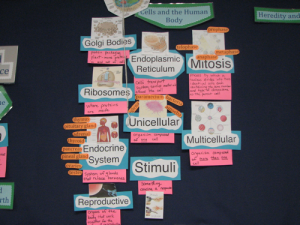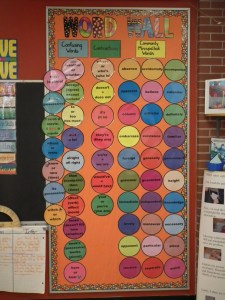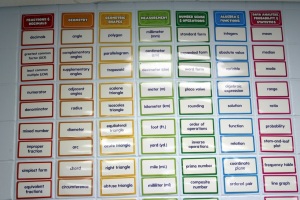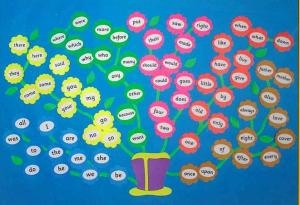
Image from: http://goo.gl/Gkmn0n
I have an announcement to make: I’ve decided to make a word wall in my classroom.
To some, this may not seem like a big deal or like a difficult task, but for me, this is a new, scary, unpredictable adventure. I’ve always been intimidated by word walls; mostly because I’ve never really understood their role in the classroom. I do know that they are considered a best practice, and I know that when used properly, word walls can have a major impact on students’ vocabulary.
But I’m still intimidated.
I decided to bite the bullet and implement a word wall the other day when my students were struggling through the first four pages of Blood and Thunder by Hampton Sides. With words like caromed, bantam, bumpkin, terrestrial, fastidious, and cadence, I realized that I can’t possibly expect my students to use context clues for every difficult word. Plus, in an effort to create a more student-centered classroom (and to not spend an entire day on vocabulary), I figured a word wall would be the most effective way to tackle the difficult vocabulary in the excerpt over an extended period of time.
Now, the question is, how does one use a word wall?
Questions to Consider…
Where will I put it? I don’t have a lot of free space on my walls. Plus, since my walls are concrete, the only way to hang something is by hot gluing it to the wall (tape doesn’t work on the paint on my walls for some reason). I do have a closet door at the front of the room…perhaps I’ll have a Diction Door instead!
I know that I want the students to select the words to go on the wall, and I know that I want them to look up the definition for the word, write an original sentence or two using the new word, and list synonyms for the word. I’ll need some sort of template for the students to use.
I also know this is something I will leave up for all of my classes, so I need to develop a system where each class will contribute different words to the wall. But how should I organize it? Should the words be in alphabetical order? Or should they just go up in a random order?
The perfectionist side of me is kicking in too. I want everything to be uniform, so I want all of the words to be typed, using the same size font. I know I want the definitions to be typed too, but getting the students to type and add the definitions to the wall will take away from the seamlessness of the strategy…so what’s more important? A messy, student-driven word wall, or a neat, teacher driven-word wall?
…Learning is messy. I suppose an organic word wall is a messy word wall.
The Plan
I’ll cut out a bunch of multi-colored strips of paper. The students will use these strips of paper for the words and definitions. I’ll also cut out smaller pieces of paper for synonyms. These will surround the original word. I’ll give each group a few markers so the words are easy to see from the back of the classroom.
Since I already sorted the students into mixed-ability literature circles, I’ll just have each literature circle select one word from the text to add to the wall. Then, as a group, they will find the definition, write a new sentence using that word, and find as many synonyms as possible. They will write these things down on the strips of paper, and then I will tape them up on the sheet of butcher paper taped to the door at the front of the classroom (A.K.A. Diction Door!) Each class will add new words, but they can also add synonyms to existing words.
The whole thing should only take about ten minutes per class.
I’ll keep you posted on the results. In the meantime, check out these word walls that other K-12 teachers have in their classrooms…

Image from: http://goo.gl/dpN80w

Image from: http://goo.gl/Iy2cB7

Image from: http://goo.gl/GtiOcp

Image from: http://goo.gl/C46eiT

Image from: http://goo.gl/tlFNn5
I hope my word wall Diction Door is pretty too.
Wish me luck.
Want to read more about the Diction Door? Check out the next two posts: ‘Twas the eve of the Diction Door and Deliberate Diction Unlocks the Door to Success

I simply loved it! Loadsa learning for me here. And I also loved it the way you put it – “Learning is messy”. True! 🙂
Thanks! It’s easy to forget, sometimes. Especially when there is so much pressure to help students master a standards right away in order to move on to the next standard…like checking off items on a to do list. But learning isn’t neat and it isn’t predictable. It’s messy! And that’s why it can be so much fun!